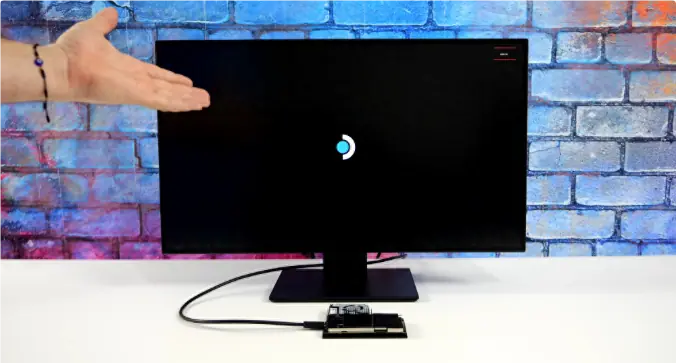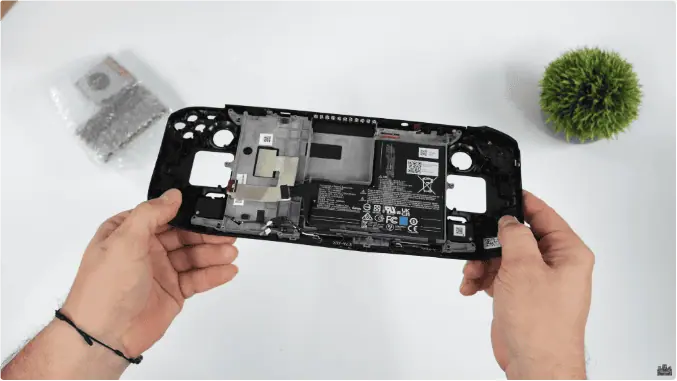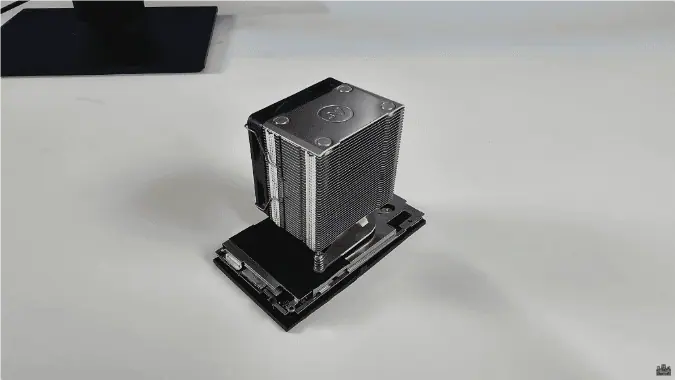There are always many experts in the world, especially in today’s internet-connected era, where these talented individuals emerge, showcasing their creative ideas and skills.

Imagine this: if you accidentally bought a Steam Deck handheld console and then, by accident, it got damaged, leaving you caught between the dilemma of repair costs and whether it’s worth it—how would that feel? This scenario might remind you of the frustration when a smartphone gets damaged unexpectedly in daily life.
However, it seems that a tech genius has already figured out a solution for everyone in advance. Even if your Steam Deck’s screen or other external components are so damaged that it becomes unusable, it can still be transformed into a mini gaming PC with unrestricted cooling performance through modification. Isn’t that an interesting idea?

This idea comes from a video on the YouTube channel ETA PRIME. The YouTuber was inspired after seeing someone selling a first-generation Steam Deck with a broken screen for $100 online and decided to try this modification himself.
The motherboard ETA PRIME purchased had already been separated from the Steam Deck’s body. He speculated that the original owner might have accidentally broken the screen while trying to DIY a case swap, and was then forced to sell it (one can’t help but wonder what the original owner’s reason was).
In any case, ETA PRIME decided to explore whether he could convert this Steam Deck into a mini gaming PC to continue utilizing its potential.

In his initial attempt, he successfully powered the motherboard via the USB-C port, outputted the video signal to a screen, and connected a game controller and a wireless keyboard, with surprisingly good results. This success piqued his interest in further modifications, such as using 3D printing to create a case or even upgrading the cooling system.
However, he also pointed out that even with the lowest-cost method of securing the motherboard and adding a heatsink, the cost would be around $149, making this modification not very cost-effective. Therefore, he does not recommend dismantling your Steam Deck for this kind of modification unless necessary (of course, if the device is already broken, that’s a different story).

During his simple modification process, he encountered some issues, such as the system being unable to update when it couldn’t detect the battery (though this might be bypassed through BIOS settings) and occasional suspected power cut-off restarts. He also used a 65W charger, possibly designed for the Nintendo Switch, in combination with HDMI output and USB-A expansion devices. Additionally, some believe that since the Steam Deck is based on the Linux system, there could be more application scenarios to explore.
Source: YouTube channel ETA PRIME

Disclaimer:
- This channel does not make any representations or warranties regarding the availability, accuracy, timeliness, effectiveness, or completeness of any information posted. It hereby disclaims any liability or consequences arising from the use of the information.
- This channel is non-commercial and non-profit. The re-posted content does not signify endorsement of its views or responsibility for its authenticity. It does not intend to constitute any other guidance. This channel is not liable for any inaccuracies or errors in the re-posted or published information, directly or indirectly.
- Some data, materials, text, images, etc., used in this channel are sourced from the internet, and all reposts are duly credited to their sources. If you discover any work that infringes on your intellectual property rights or personal legal interests, please contact us, and we will promptly modify or remove it.



